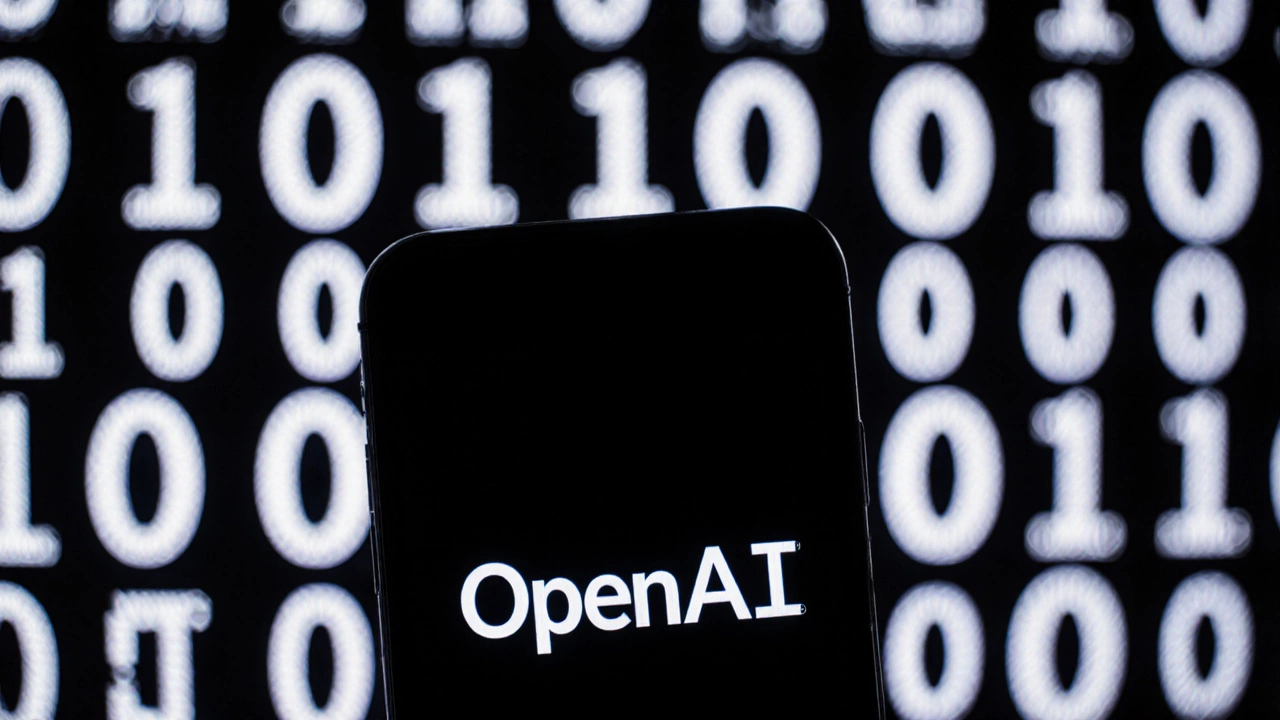OpenAI Picks AMD’s MI300X Chips in $4.9B Deal, Shaking Nvidia

When Advanced Micro Devices Inc. (AMD) unveiled a multi‑year, $4.9 billion chip supply agreement with OpenAI on Tuesday, Oct. 7, 2025, the tech world felt the tremor. The deal, announced from AMD’s headquarters in Santa Clara, California, promises to flood OpenAI’s data centers with the company’s MI300X AI accelerators, a move that could chip away at Nvidia’s near‑monopoly on high‑performance AI hardware. Shares of AMD surged 4.2% in after‑hours trading, closing at $165.43, the highest price in more than three months.
Why This Partnership Matters
OpenAI’s chief executive officer, Sam Altman, told reporters, “This partnership with AMD represents a strategic diversification of our hardware supply chain as we scale our AI operations globally.” For a company that currently runs over 350,000 Nvidia GPUs, adding roughly 200,000 AMD MI300X units over the next two years is a bold pivot. The MI300X chips, built on TSMC’s cutting‑edge 5‑nanometer process in Taiwan, pack 192 GB of HBM3 memory and are engineered to rival Nvidia’s H100 and upcoming H200 GPUs.
Deal Structure and Financial Stakes
The agreement is a multi‑year supply contract with an initial commitment of about $4.9 billion for the first 24 months. AMD’s senior vice president of data center and AI, Forrest Norrod, confirmed that the partnership also includes custom silicon development and joint engineering support for OpenAI’s next‑generation large language models.
- Initial spend: $4.9 billion (first two years)
- Projected quarterly revenue boost for AMD: $400‑$500 million starting Q2 2026
- OpenAI expects a 15‑20% reduction in infrastructure costs
- AMD’s data‑center revenue hit $2.8 billion in Q2 2025, up 115% YoY
Wedbush analyst Dan Ives upgraded AMD’s rating to “Outperform,” lifting the price target to $180 and noting, “This OpenAI partnership could finally give AMD meaningful market share in the exploding AI semiconductor space.”
Reactions from the Two Camps
AMD chief executive officer Lisa Su said, “OpenAI’s selection of our MI300X accelerators validates our commitment to delivering world‑class AI silicon solutions and marks a pivotal moment in our AI strategy.” Meanwhile, OpenAI president Greg Brockman highlighted the cost‑efficiency angle, adding that the diversified supplier strategy will help keep model prices competitive for enterprise customers.
Nvidia’s chief financial officer, Colette Kress, responded in a brief statement that “competition drives innovation, and we remain confident in our technology leadership.” Industry observers, however, point out that Nvidia still commands roughly 80% of the AI accelerator market, so the real test will be whether AMD can convert the supply deal into sustained market share.

Broader Implications for the AI Chip Landscape
Historically, AI hardware has been dominated by a handful of players, with Nvidia leading the race since the early 2010s. AMD’s push into AI began in earnest with the launch of the MI200 series in 2022, but none of those products captured the same level of attention as today’s MI300X. By aligning with OpenAI—a customer whose models power ChatGPT, DALL·E, and soon‑to‑launch GPT‑5—AMD gains a high‑profile reference that could sway other cloud providers to consider its chips.
The partnership also underscores a growing trend: AI developers are seeking to avoid single‑source dependency. Supply chain constraints and rising GPU prices earlier this year spurred OpenAI to explore alternatives, and the new deal reflects that strategic shift.
What’s Next?
OpenAI plans to begin deploying the MI300X units in Q1 2026 across data centers in the United States, Europe, and the Asia‑Pacific region. AMD expects to ship the first batch of chips by the end of December 2025. Both companies will host a joint technical workshop in March 2026 to fine‑tune the accelerator stack for upcoming GPT‑5 workloads.
AMD’s Q3 2025 earnings report, slated for Oct. 29, will likely shed more light on how the partnership is being factored into its revenue guidance. Investors will be watching closely to see if the anticipated $400‑$500 million quarterly uplift materializes.
Frequently Asked Questions
How will OpenAI’s switch to AMD chips affect pricing for its services?
OpenAI expects a 15‑20% reduction in infrastructure costs thanks to AMD’s competitive pricing and lower power consumption. In theory, those savings could be passed on to enterprise customers, though the exact impact on subscription fees remains to be announced.
Will Nvidia lose market share as a result of this deal?
Nvidia still holds about 80% of the AI accelerator market, so a single contract won’t flip the balance overnight. However, securing a marquee customer like OpenAI gives AMD a powerful reference that could attract other AI startups and cloud providers, potentially eroding Nvidia’s lead over time.
What is the timeline for AMD’s MI300X shipments to OpenAI?
AMD plans to start shipping the first batch of MI300X accelerators by the end of December 2025, with large‑scale deployment kicking off in Q1 2026 across OpenAI’s data centers worldwide.
How does the MI300X compare technically to Nvidia’s H100?
Both chips target high‑throughput AI workloads, but the MI300X packs 192 GB of HBM3 memory and leverages AMD’s CDNA‑3 architecture, while Nvidia’s H100 uses 80 GB of HBM2e. Benchmarks suggest the MI300X can deliver comparable matrix‑multiply performance with lower power draw, a key factor for large‑scale inference.
What does this partnership mean for the broader AI hardware ecosystem?
It signals a maturing market where AI developers are hedging against single‑source risk. Expect more multi‑vendor strategies, increased competition on pricing, and accelerated innovation as companies like AMD and Nvidia vie for the lucrative AI training and inference segment.

